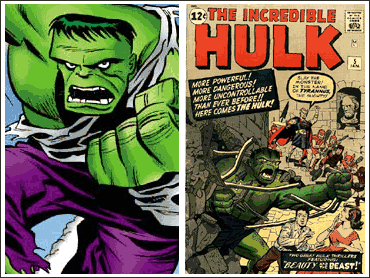Exhibit highlights history, creators of comic superheroes
On a street corner in Gotham, a black, modified Ford Galaxy has the power to freeze people in their tracks.
It's one of four Batmobiles created for the 1960s "Batman" TV show, and it's the bait to pull you into an exhibit at the New-York Historical Society called "Superheroes in Gotham," reports CBS News correspondent Mark Albert.
"This would stop traffic anywhere," said Nina Nazionale, the exhibit's co-curator. "It's great to see them line up and just ogle it. It's beautiful!"
Generations of fans have fallen in love with not just the Caped Crusader and his ride but with the whole universe of superheroes. Gotham may be a made-up world, but its hold on us is real.
Twelve-year-old Zachary Fisco and his seventh grade class are some of the 4,000 students who will be whisked through the exhibit during its four-month run.
"I thought, 'Wow! Am I really going to see these comics?'" Fisco said.
Nazionale said she wanted school groups to tour the exhibit because while kids may know who all the superheroes are, they don't know the history.
"And I think it will give them ideas. I mean, I hope it will, in terms of creating some of their own comic books or art," Nazionale said. "We definitely want them to be inspired."
That inspiration comes from seeing the humble beginning of extraordinary characters and the men who created them, including Batman's solo debut in May 1939, or original sketches of Superman from the first Action Comics series.
The exhibit also showcases the 1938 Royal typewriter made of steel that gave birth to the Man of Steel and the wool and cotton costume worn by actor George Reeves in the 1950s television show "Adventures of Superman."
The truth behind how the fiction began is as fantastical as the tales these men would tell.
Many of the original creators were the first in their families to be born in the U.S., looking not to save the world but just to survive in it during the Great Depression and World War II when the country desperately needed heroes.
"They were very young, and they were looking for work. They were often discriminated upon because they were the sons of immigrants," Nazionale said. "Most all of them the sons of Jewish immigrants."
So some creators cloaked themselves, changing their names to fit in and get published, like Stanley Lieber, who became Stan Lee, the co-creator of Spider-Man, Iron Man and the Hulk.
Jacob Kurtzberg transformed into Jack Kirby, collaborating with Lee after he co-created Captain America, and Robert Khan disguised himself as Bob Kane, co-creator of Batman.
Jerry Siegel, who conceived of Superman with Joe Schuster, even reportedly used more than one pseudonym.
From the first Superman cartoon in 1941, superheroes would eventually take flight as the gravity-defying media juggernaut we know today.
Comics have proven so commercially indestructible, Disney bought Marvel Entertainment for $4 billion in 2009 and has kept an endless line of superhero films coming.
Rival DC Comics has five television shows on right now, including "Supergirl" on CBS about Superman's cousin, which debuted as the season's most-watched new show.
And the comic conventions known as Comic Con attract a rabid faithful, fueling a booming market.
One estimate from Comichron.com puts physical sales of comic books and graphic novels in 2015 at a record of about $875 million.
"We want younger people who will become artists at some point to realize that it's possible," Nazionale said. "And everyone has to start somewhere."
Like one daydreaming 9-year-old who drew Batman in his Hebrew school book.
Seventy-five years later, that book is being showcased in the exhibit.
"The only way I could compensate for being a one-foot, bespectacled, skinny Jewish little kid who got beaten up all the time ... was to draw, become a superhero in my own way," said a grown-up Mort Gerberg.
Half a century after his doodle of the Dark Knight, Gerberg used Batman again for a memorable New Yorker cartoon in 1997.
"You never lose that initial fascination with cartoons," Gerberg said.
And those adults are passing that fascination onto their kids, who, perhaps for the first time, realize you don't need superpowers to change the world.
"I'm like, 'Wow, is this really how they first started off?'" said Fisco. "I do feel more inspired by them in that kind of way, that you could become bigger than you think you are."

